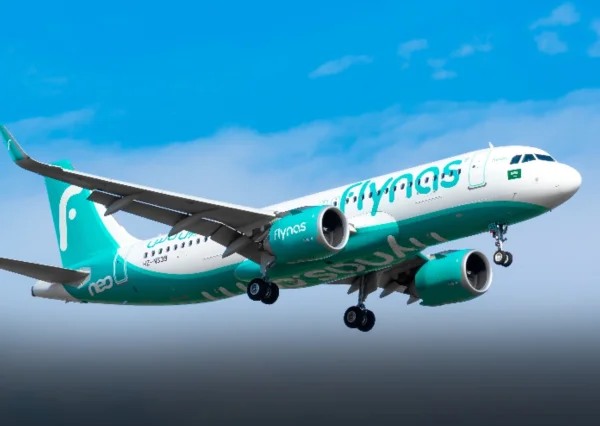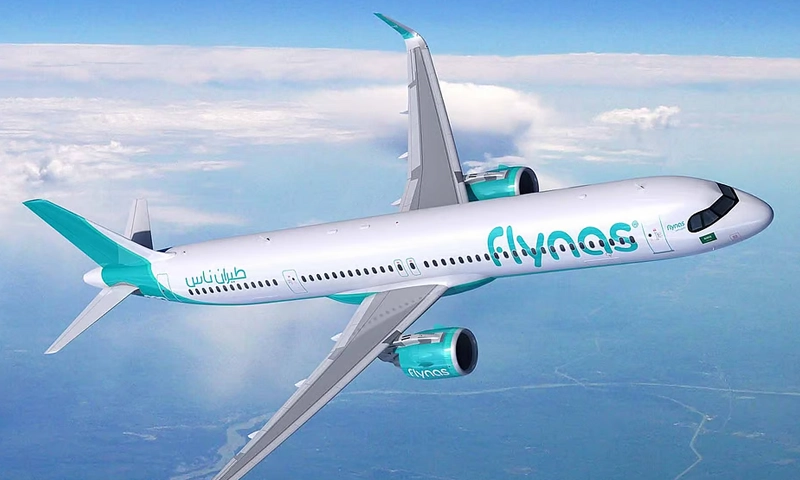The Saudi-Iran Hajj flights resume for the first time in nine years, marking a major moment in the relationship between the two countries. On May 19, 2025, a Saudi Arabian Airlines plane landed in Mashhad, Iran, carrying Iranian pilgrims bound for the Hajj in Mecca.
This flight is the first direct Hajj journey between Saudi Arabia and Iran since 2015. Its significance extends beyond religion—it reflects a warming of ties after years of tension and conflict.
Why the flights were suspended in 2015
The last time Saudi Arabian Airlines flew Hajj pilgrims from Iran was in 2015. That same year, diplomatic relations between the two nations collapsed. The crisis followed the execution of Shia cleric Sheikh Nimr al-Nimr by Saudi authorities, sparking widespread protests in Iran. One of these protests led to the storming of the Saudi embassy in Tehran.

In response, Saudi Arabia severed diplomatic ties with Iran, which disrupted all forms of direct cooperation, including Hajj travel. Iranian pilgrims had to rely on long and expensive journeys through other countries to reach Saudi Arabia for Hajj.
A sign of renewed relations
The resumption of Saudi-Iran Hajj flights is a sign of warming relations. In 2023, with help from China, both nations agreed to reopen embassies and restore full diplomatic ties. Since then, they have taken steps to rebuild cooperation in different areas, including religious affairs.

Iran’s Minister of Roads and Urban Development, Mehrdad Bazrpash, confirmed the arrival of the Saudi flight and said more flights are planned for the 2025 Hajj season. Around 80,000 Iranian pilgrims are expected to make the journey this year.
What it means for pilgrims
The return of direct flights offers huge benefits for Iranian pilgrims. It shortens travel time, reduces costs, and removes the need to go through third countries. This is especially important for elderly pilgrims who may struggle with longer journeys.
Pilgrims will now be able to travel more comfortably, efficiently, and safely to Saudi Arabia to perform Hajj. For many, this improvement will make the spiritual journey less stressful and more meaningful.
Wider impact on regional politics
The decision to resume Saudi-Iran Hajj flights also has broader regional significance. It shows that both countries are interested in resolving long-standing issues and focusing on shared interests. Cooperation on Hajj could open doors to more diplomatic, economic, and even security partnerships in the future.
Experts believe that such symbolic acts, if followed by more serious engagement, could help reduce conflicts in the Middle East, particularly in areas like Yemen, Syria, and Lebanon, where both countries have backed opposing sides.

Official statements and reactions
Iranian authorities welcomed the return of Saudi flights. The Civil Aviation Organization of Iran confirmed that the flight arrived safely in Mashhad and said it marks a new beginning in Saudi-Iran travel cooperation. Iranian state media described the moment as “historic.”
Although Saudi Arabia has not issued a detailed statement, officials from Saudi Arabian Airlines say more flights will follow to support Iranian pilgrims this season.
Understanding the importance of Hajj
Hajj is one of the five pillars of Islam and must be performed at least once in a lifetime by all physically and financially able Muslims. Each year, more than two million Muslims from around the world travel to Mecca to take part in the pilgrimage.
Hosting and facilitating Hajj is a responsibility Saudi Arabia takes very seriously. Ensuring that all Muslims, regardless of nationality, can reach Mecca safely is an essential part of the kingdom’s religious and diplomatic duties.
Saudi-Iran tensions: A look back
The relationship between Saudi Arabia and Iran has been filled with tension for decades. The two nations follow different branches of Islam—Sunni and Shia—and have often supported opposing groups in regional conflicts.
When Saudi Arabia executed Sheikh Nimr al-Nimr in 2016, protests in Iran escalated quickly, including the attack on the Saudi embassy. Diplomatic ties were cut, and cooperation in areas like Hajj was paused. For years, the two countries blamed each other for fueling instability across the region.
The China connection and peace efforts

A breakthrough came in 2023 when China stepped in to mediate talks between Saudi Arabia and Iran. After months of negotiations, the two countries agreed to re-establish diplomatic relations. Embassies were reopened, and new ambassadors were appointed.
The resumption of Hajj flights is the first real proof that the agreement is leading to positive changes. It shows that the two sides are not only talking but also taking action to improve relations in practical ways.
A hopeful future for Saudi-Iran ties
The return of Saudi-Iran Hajj flights could be a first step toward broader cooperation. If this momentum continues, we could see:
- Fewer proxy conflicts in the region
- Increased trade and tourism between the two countries
- New joint projects in infrastructure and transportation
- Greater unity among Muslim countries
Of course, rebuilding trust will take time. Political and religious differences still exist. But progress is being made, and this new chapter begins with pilgrims boarding a flight for Hajj.
Conclusion: A spiritual journey opens the door to peace
The resumption of Saudi-Iran Hajj flights after nine years is more than just a convenience for travelers. It’s a sign that old barriers are coming down and new opportunities are being created. It brings hope for a more peaceful and connected Middle East.
As thousands of pilgrims prepare to journey to Mecca, they are not just walking in the footsteps of faith—they are also part of a growing effort to heal divisions and build a more cooperative future between two of the region’s most influential nations.
Read More: Abu Dhabi Coral Garden: 40,000 Reefs to Revive Marine Life














